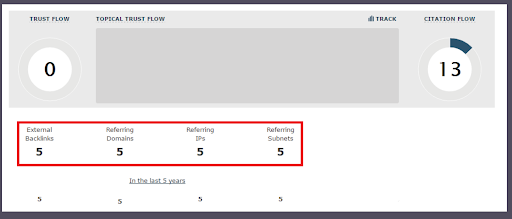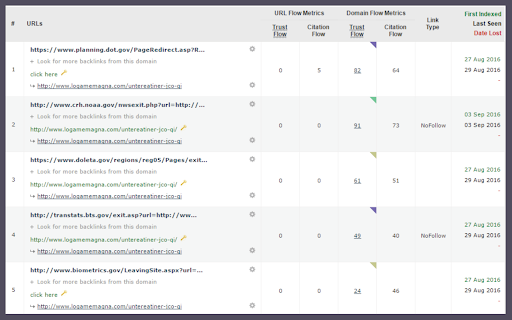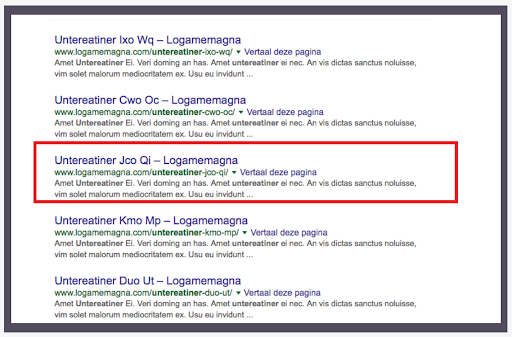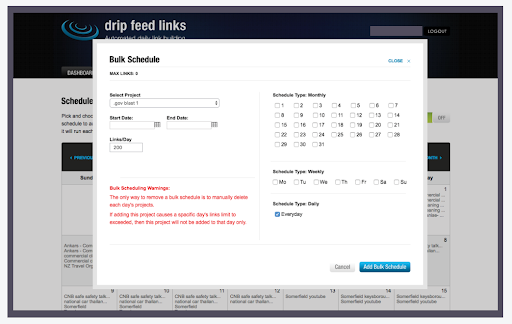Last month, we tested the black hat technique of creating .gov links through a security loophole on some old .gov sites. These type of .gov links are created on old “You are leaving this site” exit pages by manipulating the URL structure of those sites (Part one of this test is Test #55)
We created five .gov links pointing to a target test page. Unfortunately, we didn’t get any ranking movement on our test page. We submitted the target page to Majestic and to our surprise, Majestic crawled and registered all five links.


Three of the links are do-follow while two show as no-follow.

After discussing the technique with some SIA members, we decided to keep the test going by blasting the .gov links with links, to see if that would make the difference.
In doing the technique, most people will send tier 2 links to the .gov links so it only made sense to give that a try.
Test Setup
Prior to sending the links, we checked to make sure that there had been no movement from the original test.

A Drip Feed links campaign was set up to fire links at the five .gov pages. We sent 1500+ links at each .gov URL

Results
It remains unchanged. I think we can declare this technique done. As we had 5 different .gov links created and fired a decent amount of links through them and still didn’t get movement, it seems very unlikely that this technique is still working.
Clint’s Feedback
In this video, Clint discusses this test and his insights on using redirects.
Test 73 – Blasting .Gov Blackhat Links With More Links.
Alright, as you see, it’s a part two. So part one was test number 55. In short, what they were doing is it’s as a redirect exploit, for the lack of a better term.
So there’s certain CMS’ out there, and these are mostly older CMS’ and types of websites where if you append a parameter to the URL, it essentially creates a 301 to your website on other domains. And there was a lot of tools back in the day that made a lot of these links and there’s some methods going out there to this day, and how to build it.
But mostly, we find that these are just for metrics more than they are for actual SEO value. And in this particular case, it was the same thing. They tested the parameters, nothing happened. So they sent backlinks to the parameter links, and nothing happens. There’s no improvement to them, whatsoever.
How do we know though that they actually did this test right or that they didn’t leave something out. In particular, this one needs to be retested because we have no indication in these write ups if anyone bothered to check if the per new parameter backlinks where the redirect live, was an actual 301 or 302. There’s no mention of that whatsoever and that’s actually a big deal. There’s also meta refresh type 301, JavaScript 301s, and so all of those need to be identified and bounced through here before you can go and say – hey, this is dead.
And in particular, in this case, whoever wrote up this test didn’t analyze that or didn’t speak to that. So it’s a little bit harder to declare them as totally useless. I still like these kinds of redirect links. One is, some of them, if they are set up properly, 301s in particular, will pass juice through backlinks. Some of them, not all of them, but some of them do.
And others are, if you build your profile, and you put a lot of these in your profile, it makes it harder for third parties to actually reverse engineer your profile and see what you’re doing.
There is a new trend out right now of doing it mainly with Google links. Those are, I would argue that those are great for metric manipulation. Although, since those were sold as a method metric manipulation, those companies have sort of put those types of links on a list of don’t count list and reduced the value of the metric manipulation. But it’s still clouds up the backlink profile for third party tools, it makes it harder for people to identify the ones that you potentially purchased or were able to secure through good outreach on really good sites. And you don’t want people to know that your link is there, not because you’re hiding something or you’re ashamed of it, you just don’t want them to figure out – oh, I can try to get a link here in the same place. It’s not paranoia, it’s just kind doing smart business where you don’t have your real high power stuff just out there for the world to see.
Again, there’s still some value with these, it’s not necessarily always going to be about ranking value and link building value. But if you think about it, from a perspective of different points of view on identifying what value is, I would actually go ahead and keep trying to build some of these out. You don’t have to get crazy with it, you don’t have to build a whole bunch of them. 10, 15, 20 is probably enough. Identify 20 good sites that you like your website associated with, and use those, and see if, not only if it helps you diversify your link profile, but some of those will indeed help you rank. It’s just you have to identify those and do tests one by one to figure out which ones are doing it, which ones are helping you. And in this particular case, SIA did this test and it was too random in my opinion. We just randomly selected this set and there’s no pre testing done to see if individual ones of these were passing link juice.
And without that, essentially sending 1500 links to just random URLs that you don’t know if they’re passing juice or not, seems kind of counterintuitive and counter to the whole scientific SEO testing principles that we’re trying to apply here.
So definitely needs a retest, definitely needs a different approach to it. And it’s certainly something that we want to continue to entertain – .gov, .edu, and regular websites that still have this redirect hack, if we want to call it for lack of a better term to use, to build up backlinks.
